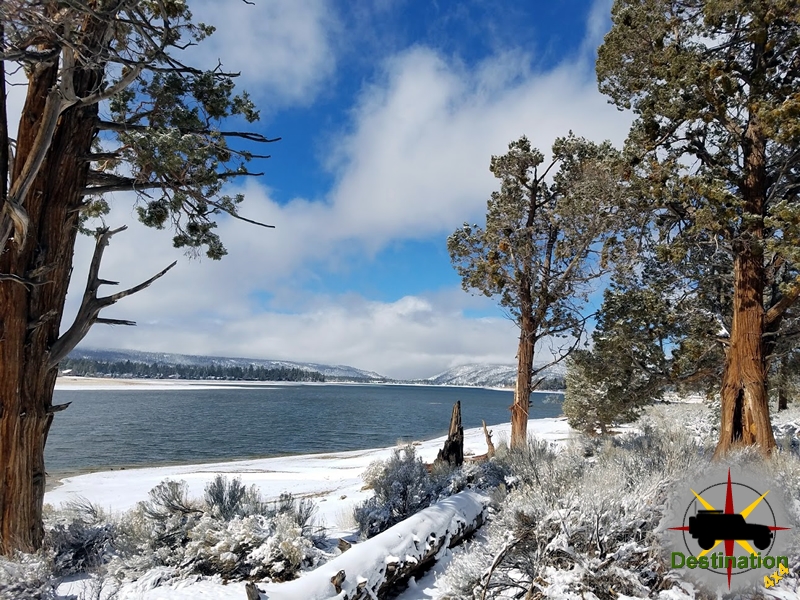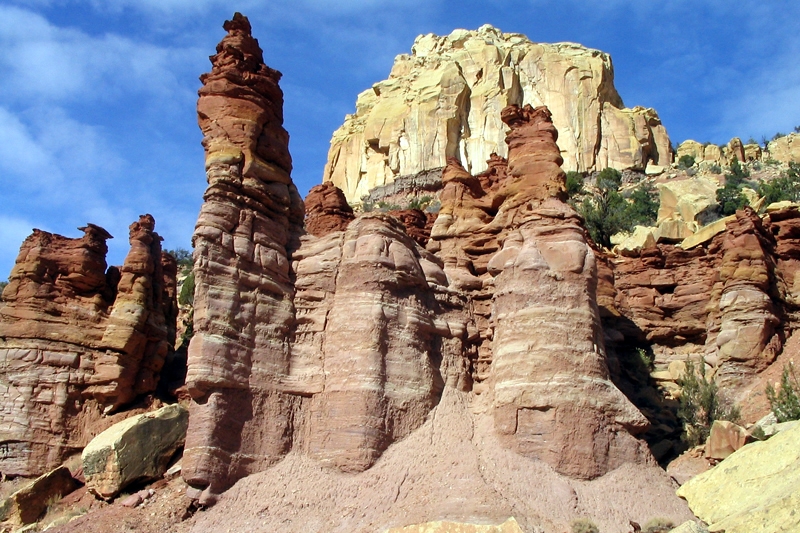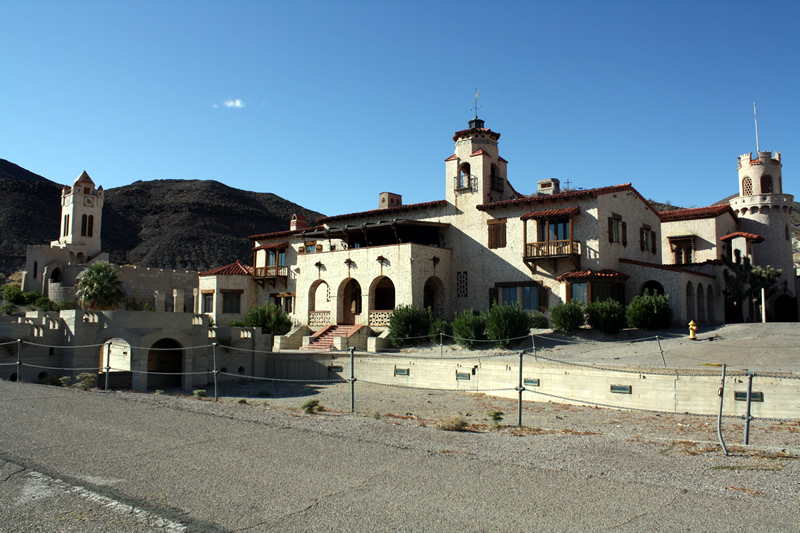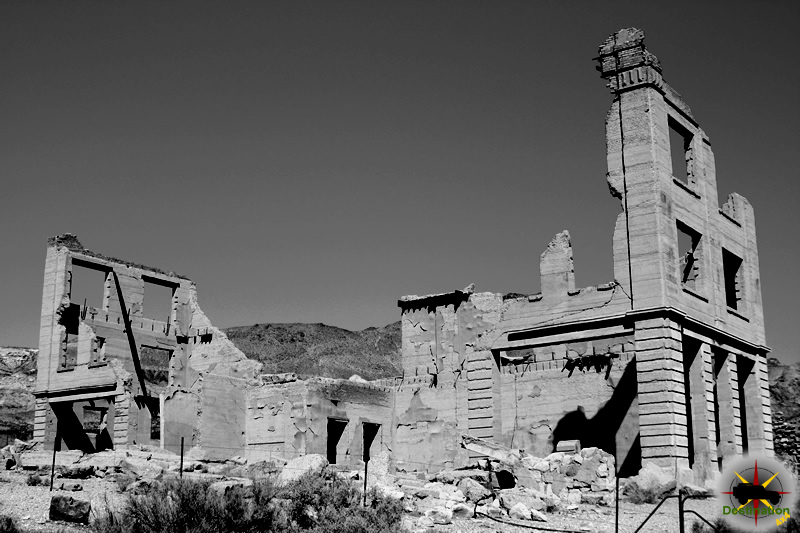
Fort Mohave
Fort Mohave is a historic settlement located in the southwestern region of Mohave county, Arizona, United States. Nestled along the banks of the Colorado River near Beale’s Crossing, it has played a significant role in the development and growth of the American West. Over the centuries, this area has witnessed the presence of various indigenous tribes, Spanish explorers, American pioneers, and military forces, each leaving their mark on the region’s rich history.

The history of Fort Mohave dates back thousands of years, with evidence of human habitation found in archaeological sites within the surrounding area. The Mojave people, from whom the fort derived its name, were one of the prominent Native American tribes in the region. They lived along the Colorado River, engaging in agriculture, hunting, and trade with other indigenous groups.
The first recorded European contact in the area occurred in the 16th century when Spanish explorers, including Melchor Díaz and Francisco Garcés, ventured into present-day Arizona. They encountered the Mojave people and established a limited presence in the region through the establishment of missions and trade routes. However, it wasn’t until the early 19th century that significant European-American exploration and settlement occurred.
In 1826, trapper and explorer Jedediah Smith traversed the Colorado River, reaching the vicinity of Fort Mohave. His expedition paved the way for subsequent fur trappers and traders who ventured into the area in search of beaver pelts and new trade opportunities. This influx of fur trappers and mountain men led to increased interaction between Native American tribes and Euro-Americans, often resulting in conflicts and tensions.

The establishment of Fort Mohave came about as a direct response to these conflicts. In 1858, the U.S. Army constructed the fort on the east bank of the Colorado River, near the confluence of the Mohave and Hardy rivers. Initially known as Camp Colorado, its primary purpose was to protect American settlers and travelers on their journey to the California gold fields during the height of the Gold Rush.
Fort Mohave was strategically positioned along the major transportation route that linked the Atlantic and Pacific coasts, known as the Mojave Road. It served as a critical outpost for the U.S. Army during the American Civil War, as troops were deployed to protect the mail and telegraph lines and maintain control over the region.

The fort played a significant role in the military campaigns against Native American tribes, particularly the Mojave, Chemehuevi, and Navajo people, who were resisting the encroachment of settlers on their traditional lands. Numerous skirmishes and battles occurred in the area as tensions escalated between Native Americans and the expanding American population.
Following the conclusion of the Civil War, the fort gradually lost its military significance. In 1890, it was officially decommissioned, and the remaining structures were abandoned. However, the establishment of the Mohave Valley Irrigation Project in the early 20th century sparked a renewed interest in the region.
The irrigation project brought water to the arid lands surrounding Fort Mohave, facilitating the cultivation of crops and the establishment of farming communities. This development, coupled with the construction of the Davis Dam in the 1950s, which created Lake Mohave, transformed the economy and landscape of the area. The lake provided recreational opportunities, attracting tourists and supporting the growth of the local tourism industry.
The region continues to be influenced by its proximity to the Colorado River, offering a range of water-based activities such as boating, fishing, and water sports. The Fort Mojave Indian Reservation, located nearby, serves as a reminder of the area’s rich Native American heritage and provides a cultural center for the Mojave, Chemehuevi, and Navajo tribes.
Fort Mohave Trail Map
References
John Wesley Powell
John Wesley Powell, a remarkable American explorer, geologist, and ethnologist, was born on March 24, 1834, in Mount Morris, New York. His expeditions through the uncharted territories of the American West not only added to scientific knowledge but also provided invaluable insights into the land’s geological and cultural diversity. Powell’s legacy as a pioneer of exploration and his tireless efforts in promoting conservation measures have left an indelible mark on American history.

Early Life and Education
Powell grew up in rural New York, where his love for nature and the outdoors was nurtured from an early age. Although he lost his right arm in a childhood accident, Powell’s determination and thirst for adventure were undeterred. He developed a keen interest in natural sciences and geography and pursued higher education at Illinois College and later at Oberlin College, where he focused on geology.
Grand Canyon Expeditions
Powell’s most famous and daring expedition was his 1869 journey down the Colorado River, known as the Powell Geographic Expedition. With a team of nine men, Powell set out to explore the largely uncharted canyons and rapids of the Colorado River and gather valuable scientific data. The expedition faced numerous hardships, including treacherous rapids, scarce food supplies, and hostile encounters with Native American tribes. Miraculously, Powell and his crew successfully navigated the treacherous river and completed the journey, providing unprecedented knowledge of the Grand Canyon and its geological formations.

Powell’s subsequent expeditions further solidified his reputation as a fearless explorer. He embarked on multiple journeys across the American West, including explorations of the Green and Colorado Rivers, the Rocky Mountains, and the Uinta Mountains. Powell’s meticulous record-keeping and scientific observations greatly expanded the understanding of the region’s geology, hydrology, and ethnography.
Scientific Contributions
Powell’s expeditions were not merely adventurous endeavors but also scientific ventures aimed at advancing knowledge in various fields. He published numerous papers and reports detailing his findings, including “Exploration of the Colorado River of the West and its Tributaries” and “Canons of the Colorado.” These works significantly contributed to the geological understanding of the American West, shaping subsequent research and studies in the region.
Additionally, Powell’s expertise in ethnology led him to conduct extensive research on Native American tribes. He documented their cultures, languages, and customs, recognizing the importance of preserving their heritage. His ethnographic studies formed a crucial foundation for future anthropological research in the United States.

Conservation Advocacy
John Wesley Powell was not only a scientist and explorer but also an early advocate for conservation. Recognizing the fragile nature of the American West’s ecosystems, he became a vocal proponent of sustainable land use practices and preservation efforts. Powell believed that the arid region’s limited water resources necessitated careful management and planning.
In 1879, Powell presented his influential “Report on the Lands of the Arid Region of the United States” to Congress. This groundbreaking report emphasized the need for responsible irrigation and land development strategies, urging policymakers to consider the long-term consequences of uncontrolled resource exploitation. Powell’s report laid the groundwork for the eventual establishment of the U.S. Forest Service and the Bureau of Reclamation, both crucial agencies in land and water management.
Legacy and Impact
John Wesley Powell’s contributions to exploration, science, and conservation continue to resonate today. His expeditions not only unveiled the wonders of the American West but also inspired future generations of explorers and scientists. Powell’s emphasis on interdisciplinary research and his understanding of the intricate relationships between humans and their environment remain
References
Hamilton Nevada
Hamilton is a small ghost town located in White Pine County, Nevada, in the western United States. Despite its current state, the town has a rich and fascinating history. Hamilton, originally known as “Cave City,” was established in 1868 by prospectors searching for silver in the surrounding mountains. The town was renamed Hamilton in honor of a prominent local businessman, W. A. Hamilton, who helped finance the development of the area.

During its peak, Hamilton was a bustling town with a population of over 2,000 people. The town had several hotels, saloons, stores, and a post office. It also had a school, a church, and a theater, which hosted traveling shows and performances. The town’s main industry was mining, and several mines operated in the area, including the Hamilton, Treasure City, and Ward mines.
In the late 19th century, Hamilton was a prosperous town, and its residents enjoyed a good quality of life. However, in the early 20th century, the town began to decline as the mines ran out of ore and the price of silver fell. Many of the town’s residents left in search of better opportunities, and the town’s population dwindled.
During World War II, Hamilton briefly experienced a resurgence as the demand for minerals increased. The town’s mines were reopened, and new mining techniques were introduced. However, after the war, the demand for minerals declined, and the mines were once again closed.
By the 1950s, Hamilton was virtually abandoned, and most of its buildings had fallen into disrepair. However, the town’s history and architecture attracted the attention of preservationists, and efforts were made to restore some of the buildings. In 1961, the Hamilton Ghost Town was established, and the remaining buildings were preserved as a tourist attraction.

Today, Hamilton is a popular destination for tourists interested in Nevada’s mining history. Visitors can explore the town’s preserved buildings, including the schoolhouse, the jail, and the saloon. The town’s cemetery, which dates back to the late 19th century, is also a popular attraction.
In recent years, Hamilton has been the subject of several documentaries and books, which have helped to raise awareness of its history. The town’s abandoned buildings and desolate surroundings provide a glimpse into Nevada’s past and remind us of the hardships and challenges faced by those who settled and worked in the area.
Hamilton, Nevada, may be a ghost town today, but its history and legacy live on. The town’s story is a reminder of the boom-and-bust cycles that have characterized Nevada’s mining industry and the resilience of the people who lived and worked in the area. Hamilton is a testament to the human spirit and a valuable piece of Nevada’s history that should be preserved and celebrated for generations to come.
Hamilton Nevada Town Summary
| Name | Hamilton Nevada |
| Location | White Pine county, Nevada |
| Latitude, Longitude | 39.2529, -115.4864 |
| GNIS | 859930 |
| Elevation | 2456 meters / 8058 feet |
| Newspaper | Inland Empire Mar 27, 1869 – Apr 10, 1870; Oct 4 – Nov 9, 1870 |
| Nevada State Historic Marker No | 53 |
| Nevada State Historic Marker Lat/Long | 39.3535, -115.3946 |
Nevada State Historic Marker Text
Hamilton Nevada is Nevada State Historic Marker number fifty three.
The mines of the White Pine district were first established in 1865. Between 1868 and 1875, they supported many thriving towns including Hamilton, Eberhardt, Treasure City, and Shermantown. These communities, now all ghost towns, are clustered eleven miles south of this point.
Hamilton and its neighbors thrived as a result of large-scale silver discoveries in 1868. Experiencing one of the most intense, but shortest-lived silver stampedes ever recorded, the years 1868-1869 saw some 10,000 people living in huts and caves on Treasure Hill at Mount Hamilton, at an elevation of 8,000 to 10,500 feet above sea level.
Hamilton was incorporated in 1869 and became the first county seat of White Pine County that same year. It was disincorporated in 1875. In this brief span of time, a full-sized town came into bloom with a main street and all the usual businesses. Mine brick courthouse was constructed in 1870.
On June 27, 1873, the main portion of the town was destroyed by fire. The town never fully recovered. In 1885, another fire burned the courthouse and caused the removal of the White Pine County seat to Ely.
STATE HISTORICAL MARKER No. 53
STATE HISTORIC PRESERVATION OFFICE
WHITE PINE PUBLIC MUSEUM INC.
Trail Map
References
Subway Canyon – Left Fork of North Creek
Subway Slot Canyon is a unique geological formation located in the Zion National Park in southwestern Utah, USA. It is considered one of the most popular hiking trails in the park, known for its challenging terrain and breathtaking views. The canyon gets its name from its tubular shape, which resembles the underground trains or subway tunnels.

History
The Subway Slot Canyon was formed millions of years ago by the erosion of Navajo Sandstone, a red-colored rock formation that is found in the southwestern United States. The slot canyon was created by the flow of water, which gradually wore away the sandstone, forming a narrow, winding passage through the rock. The canyon was first discovered by explorers in the 1930s, but it was not until the 1970s that it became a popular destination for hikers.
Geology
The Subway Slot Canyon is a part of the Zion Wilderness, which covers an area of approximately 124,406 acres. The canyon is about 9 miles long and ranges in width from 5 to 15 feet. The canyon walls are made up of Navajo Sandstone, which is known for its unique patterns and colors. The sandstone is layered, with different colors and textures, giving the canyon walls a unique and stunning appearance. The canyon also features a series of pools and waterfalls, which add to its beauty.
Flora and Fauna
The Subway Slot Canyon is home to a variety of flora and fauna. The area around the canyon is covered with sagebrush, juniper, and pinyon trees. The canyon itself is home to a variety of ferns, mosses, and other plant species. The canyon is also home to a variety of animals, including bighorn sheep, mule deer, and mountain lions. Hikers may also see a variety of birds, including hawks, eagles, and owls.
Hiking Experience
The Subway Slot Canyon is considered one of the most challenging hiking trails in the Zion National Park. The trail is rated as moderate to strenuous and requires a permit to hike. Hikers must be prepared for a difficult and sometimes dangerous hike, as the trail includes steep drops, narrow passageways, and deep pools of water. Hikers must also be prepared for changing weather conditions, as the canyon can be very hot in the summer and very cold in the winter.
The Subway Slot Canyon is a unique geological formation that offers hikers a challenging and rewarding experience. The canyon’s unique colors, textures, and shapes make it a must-see destination for anyone visiting the Zion National Park. However, hikers must be prepared for the challenges that come with hiking in the canyon, including difficult terrain and changing weather conditions. With proper preparation and precautions, hikers can safely explore the beauty of the Subway Slot Canyon and experience one of the most stunning geological formations in the world.
Temple of Sinawava
Located in Zion National Park in southwestern Utah, the Temple of Sinawava is a stunning geological formation that attracts visitors from all around the world. This natural temple is the result of millions of years of geological processes, and it has been a sacred site for the indigenous people of the area for centuries. In this travel and geological report, we will explore the history, geology, and attractions of the Temple of Sinawava, as well as provide practical information for visitors.

History
The Temple of Sinawava is named after the Paiute Indian god, Sinawava, who is believed to have lived in the area. For centuries, the Paiute and other indigenous peoples have considered the area to be sacred, and they have performed various rituals and ceremonies there. The Paiute called the area “Mukuntuweap,” which means “straight canyon,” and it was later renamed Zion National Park by the Mormons who settled in the area.
Geology
The Temple of Sinawava is located at the end of the Zion Canyon Scenic Drive, and it is one of the most popular destinations in the park. The temple is a natural amphitheater that was formed by the Virgin River, which has been carving through the sandstone for millions of years. The river has eroded the sandstone in such a way that it has created a stunning array of geological features, including towering cliffs, deep canyons, and narrow slot canyons.
The Temple of Sinawava is a particularly unique geological formation because it is located at the end of Zion Canyon, where the canyon narrows dramatically. The canyon walls rise up to over 2,000 feet in height, and they are composed of various layers of sandstone that were deposited over millions of years. The layers of sandstone are different colors, ranging from red to white, and they provide a stunning contrast against the blue sky.
Attractions
The Temple of Sinawava offers visitors a variety of attractions, including hiking, wildlife viewing, and photography. The most popular activity at the temple is hiking the Riverside Walk, which is a 2.2-mile round-trip hike that follows the Virgin River to the entrance of the temple. Along the way, hikers will be treated to stunning views of the canyon walls, as well as a variety of wildlife, including bighorn sheep, mule deer, and numerous bird species.
Once visitors reach the entrance of the temple, they can continue hiking up the river, which leads to the beginning of the Narrows. The Narrows is a narrow slot canyon that is formed by the Virgin River, and it is one of the most popular hikes in Zion National Park. The Narrows can be hiked in two ways, either by hiking up the river or by hiking down the river. Hiking up the river requires a permit and special equipment, while hiking down the river is open to all visitors.
Another popular attraction at the Temple of Sinawava is photography. The temple is a popular destination for photographers, both amateur and professional, who come to capture the stunning beauty of the canyon walls and the river. The best time to photograph the temple is during the early morning or late afternoon, when the sun is low in the sky and the light is soft and warm.
Practical Information
The Temple of Sinawava is located in Zion National Park, which is open year-round. The park is located in southwestern Utah, and it can be accessed via State Route 9, which runs through the park. There are a variety of lodging options in the park, including campgrounds, lodges, and hotels, as well as numerous restaurants and gift shops.
Visitors to the Temple of Sinawava should come prepared with appropriate clothing and gear, as the weather can be unpredictable.



